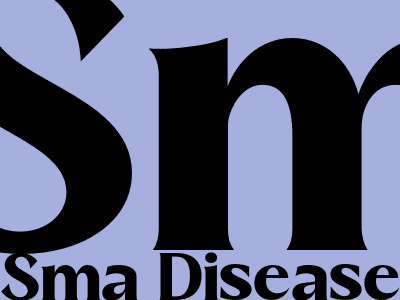Spinal Muscular Atrophy (SMA): A Comprehensive Guide
What is SMA?
Spinal Muscular Atrophy (SMA) is a rare, inherited neuromuscular disorder that affects the motor neurons in the spinal cord. Motor neurons are responsible for sending signals from the brain to the muscles, allowing for movement. In SMA, these motor neurons are damaged or missing, leading to muscle weakness and atrophy (wasting).
SMA is caused by a mutation in the SMN1 gene, which provides instructions for making the survival motor neuron (SMN) protein. This protein is essential for the health and function of motor neurons.
Types of SMA
There are several types of SMA, classified based on the age of onset and severity of symptoms:
- Type 0 SMA (Infantile SMA): Onset before 6 months of age, severe muscle weakness, difficulty breathing and swallowing, and short life expectancy without treatment.
- Type 1 SMA (Infantile SMA): Onset between 6-18 months of age, less severe than Type 0 but still significant muscle weakness, difficulty sitting and crawling, and a short life expectancy without treatment.
- Type 2 SMA (Intermediate SMA): Onset between 6 months and 2 years of age, milder than Types 0 and 1, with delayed motor milestones, difficulty running and jumping, and progressive muscle weakness.
- Type 3 SMA (Juvenile SMA): Onset between 2 and 17 years of age, characterized by muscle weakness in the legs and arms, difficulty walking and climbing stairs, and progressive scoliosis.
- Type 4 SMA (Adult SMA): Onset after 18 years of age, mildest form, with gradual muscle weakness and wasting, mainly affecting the arms and legs.
Symptoms of SMA
Symptoms of SMA vary depending on the type and severity of the condition. Common symptoms include:
- Muscle weakness and atrophy, especially in the legs and arms
- Difficulty breathing and swallowing
- Delayed motor milestones (sitting, crawling, walking)
- Muscle cramps and twitching
- Scoliosis (curvature of the spine)
- Respiratory problems, such as pneumonia and sleep apnea
- Joint contractures (stiffness)
Diagnosis of SMA
SMA is diagnosed through a combination of physical examination, family history, genetic testing, and electromyography (EMG), which measures electrical activity in the muscles.
Genetic testing can confirm the presence of SMN1 gene mutations and determine the type of SMA. EMG can assess the severity of muscle damage and help differentiate SMA from other neuromuscular disorders.
Treatment for SMA
Treatment for SMA has significantly improved in recent years. The primary goal of treatment is to slow the progression of muscle weakness and improve motor function.
Treatment options include:
- Nusinersen (Spinraza): A medication injected into the spinal canal that increases SMN protein levels.
- Onasemnogene abeparvovec-xioi (Zolgensma): A one-time gene therapy that replaces the missing or damaged SMN1 gene.
- Risdiplam (Evrysdi): An oral medication that increases SMN protein levels.
- Physical therapy: To improve muscle strength and range of motion.
- Occupational therapy: To help with daily activities and independence.
- Respiratory support: To assist with breathing, such as mechanical ventilation.
Prognosis for SMA
The prognosis for SMA varies depending on the type and severity of the condition. With early diagnosis and treatment, the outlook has improved significantly.
Individuals with Type 0 SMA face the most challenges, with a short life expectancy without treatment. However, advances in treatment have extended life expectancy and improved quality of life for individuals with all types of SMA.
Conclusion
Spinal Muscular Atrophy is a complex and challenging condition. However, research and treatment advancements have transformed the outlook for individuals with SMA. Early diagnosis and access to appropriate treatment can significantly improve quality of life and life expectancy.
If you or someone you know is experiencing symptoms suggestive of SMA, it is important to seek medical attention promptly for accurate diagnosis and timely intervention. With ongoing research and continued progress in treatment options, the future for individuals with SMA is filled with hope and promise.

Komentar